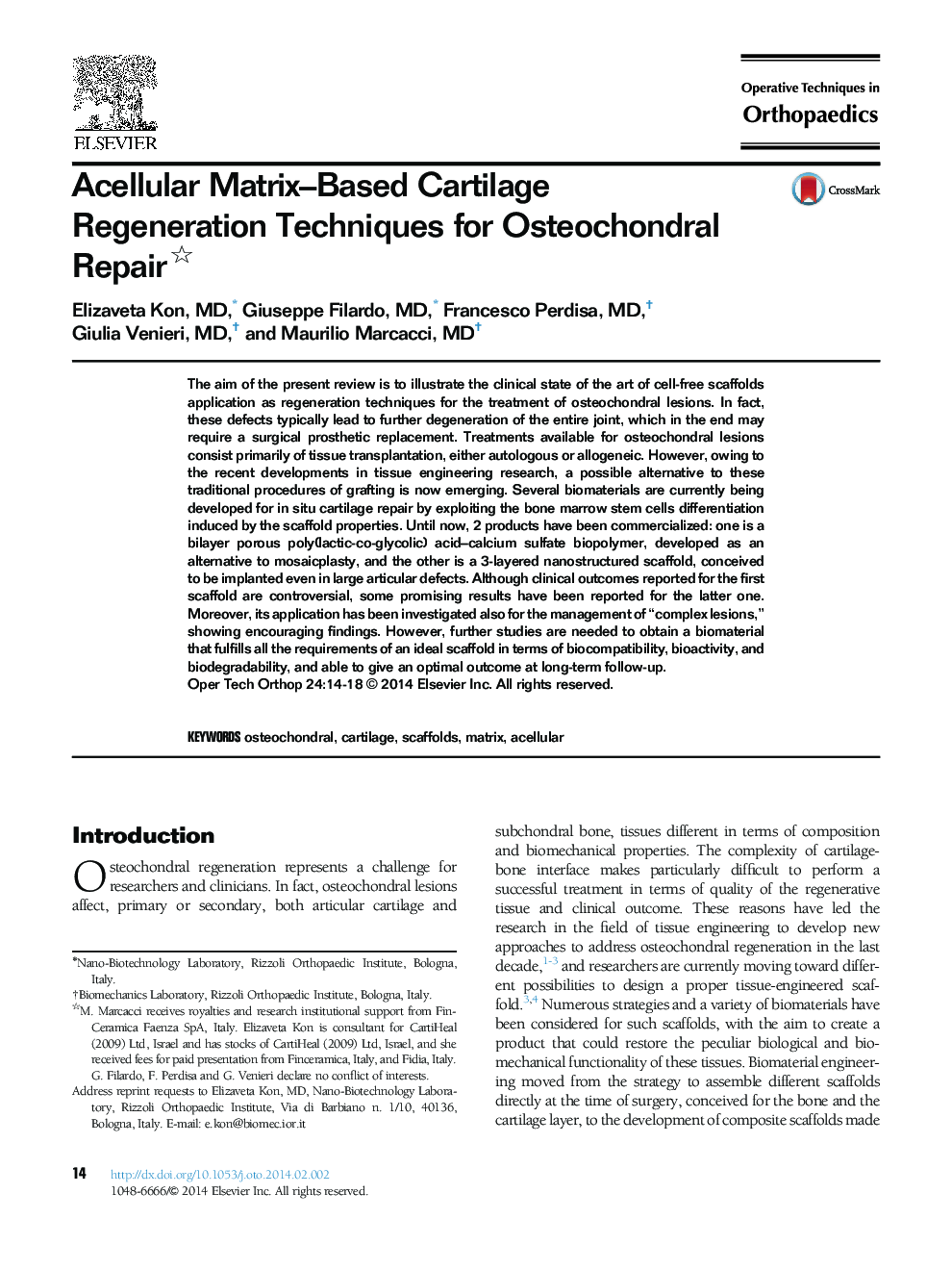| Article ID | Journal | Published Year | Pages | File Type |
|---|---|---|---|---|
| 4078868 | Operative Techniques in Orthopaedics | 2014 | 5 Pages |
Abstract
The aim of the present review is to illustrate the clinical state of the art of cell-free scaffolds application as regeneration techniques for the treatment of osteochondral lesions. In fact, these defects typically lead to further degeneration of the entire joint, which in the end may require a surgical prosthetic replacement. Treatments available for osteochondral lesions consist primarily of tissue transplantation, either autologous or allogeneic. However, owing to the recent developments in tissue engineering research, a possible alternative to these traditional procedures of grafting is now emerging. Several biomaterials are currently being developed for in situ cartilage repair by exploiting the bone marrow stem cells differentiation induced by the scaffold properties. Until now, 2 products have been commercialized: one is a bilayer porous poly(lactic-co-glycolic) acid-calcium sulfate biopolymer, developed as an alternative to mosaicplasty, and the other is a 3-layered nanostructured scaffold, conceived to be implanted even in large articular defects. Although clinical outcomes reported for the first scaffold are controversial, some promising results have been reported for the latter one. Moreover, its application has been investigated also for the management of “complex lesions,” showing encouraging findings. However, further studies are needed to obtain a biomaterial that fulfills all the requirements of an ideal scaffold in terms of biocompatibility, bioactivity, and biodegradability, and able to give an optimal outcome at long-term follow-up.
Related Topics
Health Sciences
Medicine and Dentistry
Orthopedics, Sports Medicine and Rehabilitation
Authors
Elizaveta MD, Giuseppe MD, Francesco MD, Giulia MD, Maurilio MD,
